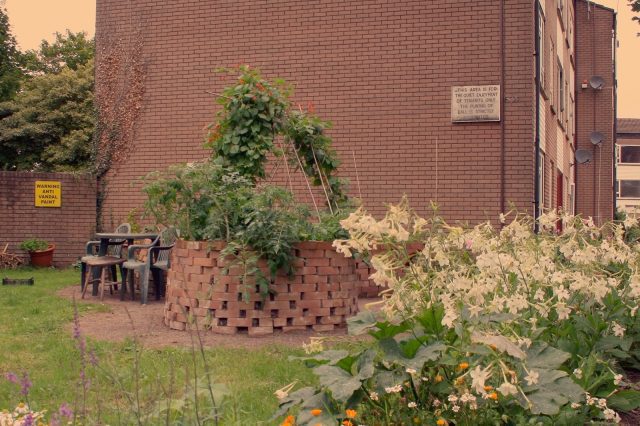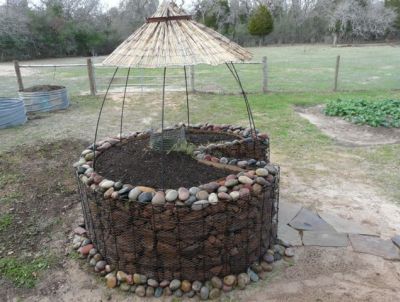A drought-tolerant garden is a must in places where it’s consistently hot and dry through the summer months, making a keyhole garden of huge interest to people in the southwestern US! But there are more benefits to building this kind of garden, like saving precious water and creating perfect organic fertilizer.
A keyhole garden is designed to include a composting tower. It was developed for sustainable home gardens and smallholder market farming in Lesotho, a Sub-Saharan Africa country primarily at high altitudes. In harsh climates, keyhole gardening has made good food available to many. It works so well that the practice has spread to other parts of the African continent, and is becoming popular in arid places like Texas, California, and Colorado.
 A keyhole garden is a raised bed that uses permaculture practices. It must be round, have a compost bin in the center, and integrate dry organic materials as the lining of the structure.
A keyhole garden is a raised bed that uses permaculture practices. It must be round, have a compost bin in the center, and integrate dry organic materials as the lining of the structure.
A true keyhole build is circular and has a diameter of about 6-feet.
You can build a keyhole garden retainer wall with rocks, bricks, or wood, but according to the Engledow Group, you want them to be about 3-feet tall. Using cardboard as a liner means you don’t need to mortar your rocks together; this layer keeps both soil and moisture inside the bed. However, the cardboard will eventually rot away, so it might be a good idea to put a layer of geotextile fabric between it and your wall.

The compost enclosure for recycling kitchen scraps should be 1-foot wide by 4-feet tall, made from woven wire fencing or a circle of closely set branches, and should be placed so it is inside the retainer walls.
If the bin is half exposed, it will not function properly as a composter or a source of garden moisture. Also, make sure you can reach the compost bin to add water with a watering can, and if it rains a lot where you live, you might want to add a roof over the composting space to control the moisture content.
 Unlike the normal raised bed, the keyhole method requires topping off as the bottom layers decompose. Another important difference to note is that, in a keyhole planter, the soil level is higher in the center than at the walls, distributing rainfall and subsurface moisture to all the plants.
Unlike the normal raised bed, the keyhole method requires topping off as the bottom layers decompose. Another important difference to note is that, in a keyhole planter, the soil level is higher in the center than at the walls, distributing rainfall and subsurface moisture to all the plants.
Before you dive into building your own, do take the time to read up on how the infill is created. It’s not going to be the same if you build a structure and fill it with potting mix or garden soil.
Special ingredients include aged dried manure, cow bones, wood ashes, clover, rusty stuff, old compost, and forest floor mulch, along with newspaper and cardboard. All these things create naturally balanced, slow-release organic fertilizer for the plants in a keyhole garden.
Sustainable food production without a big price tag!
Learn more:
Images courtesy of Jeremy Segrott, Aletha St. Romain via Engledow Group, txdon via TractorByNet, and Send A Cow (respectively).
Last updated by Catherine Sherriffs on 27/04/2020.
